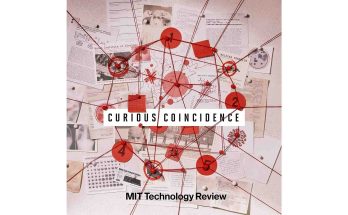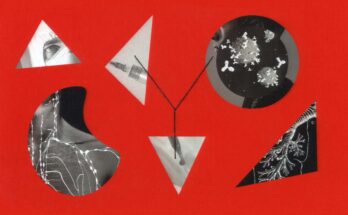“The Vulnerable Can Wait. Vaccinate the Super-Spreaders First”
WIRED, November 10, 2020
Science
By Christopher Cox
“Who gets priority when Covid-19 shots are in short supply? Network theorists have a counterintuitive answer: Start with the social butterflies.”
In recent months, Albert-László Barabási has tried to walk around Budapest while taking calls, “to get some steps.” At 53, he is still youthful and fit, though the pandemic has kept him unusually busy. His standard route around town takes him by the peach-colored facade of the Alfréd Rényi Institute, named for a Hungarian mathematician who, with his collaborator Paul Erdős, helped lay the cornerstone of network science in the 1950s and ’60s. Today the discipline informs all sorts of pursuits, from generating algorithmic recommendations on Facebook to mapping terrorist networks to, yes, forecasting the spread of lethal diseases. But when Rényi got started, he wanted the answer to a simple question: What would a network organized completely at random look like? How would it behave?
Although Erdős and Rényi were theoreticians, they thought their work might eventually have some practical application—say, in understanding the evolution of railways or the power grid. But a few decades later, Barabási and Réka Albert, his colleague in the physics department at Notre Dame, determined that the Erdős-Rényi model was actually too random to accurately describe most naturally occurring networks.
“Our first key discovery,” Barabási says, “was that there’s really no random network out there.” They found that in most settings, from Hollywood to academia to the World Wide Web, networks tended to be “extremely heterogeneous, in the sense that their connectivity is dominated by a few very, very highly connected hubs.” Barabási and Albert called these networks “scale-free”: Most nodes could contact just a handful of others, but a small fraction were off the scale in terms of connectivity. Your website might link to four pages. Google links to 800 million.
It was Alessandro Vespignani, then at the International Centre for Theoretical Physics in Trieste, Italy, who tied this work directly into the study of epidemics, beginning with the digital kind. Why, Vespignani wondered, were computer networks still susceptible to viruses even though millions of individual users had antivirus software? The answer, he discovered, was that if you didn’t inoculate the nodes, malicious code could still zip around the internet with relative ease.
Not long after that, a colleague asked whether all this work on the structure of networks had ever been applied to the spread of real biological epidemics. “I thought, probably they have already done that,” Vespignani says. They hadn’t, and in 2002 he and a colleague wrote a paper on a “targeted immunization scheme in which we progressively make immune the most highly connected nodes, i.e., the ones more likely to spread the disease.” They ran a computer simulation of the effect of such a strategy on a scale-free network, which was meant to mimic “the web of human sexual contacts.” The results, they wrote, were “arresting”: You could protect the whole system by immunizing as little as 16 percent of the population, as long as you started with the most highly connected people.
Barabási remembers reading Vespignani’s paper and trying to apply its logic to the AIDS epidemic in sub-Saharan Africa, where the US government had just announced an ambitious program to combat the disease. An epidemiologist schooled in network theory would give HIV drugs to the members of society with the highest number of sexual contacts, Barabási says—but that wasn’t the government’s approach. “The Bush administration was giving the treatment to mothers with children because that sounds really good, and it’s soft and cozy,” he says. (It also protects against mother-to-child transmission.) “But what our measurement has shown is, no, no, no, you should actually give the HIV drugs to prostitutes, because those are the ones who are the biggest hubs when it comes to the spread of HIV.”
For sexually transmitted diseases, the barriers to targeting the super-spreaders may have been political. But for respiratory infections like influenza, SARS, and Covid-19, the limit is computational. There is no practical way to track down the most highly connected nodes in a network that is as big as the whole world, and where the definition of a link includes almost every type of human interaction. The physicists weren’t done yet, however. They set themselves to that very problem: Can you find the nodes without a complete map?
In 2003, during the first SARS epidemic, Shlomo Havlin, a physicist at Bar-Ilan University near Tel Aviv, proposed one of the most ingenious solutions to this problem. In a paper called “Efficient Immunization Strategies for Computer Networks and Populations,” Havlin and two colleagues argued that you could achieve global effects on a complex network using only local knowledge. All you had to do was follow a simple script: Take a random sample of a population, ask each individual to name a single acquaintance, and vaccinate the acquaintance. “In this way,” Havlin says, “you can reach the hubs, the super-spreaders, very easily.”
This acquaintance immunization strategy wasn’t as efficient as one that targeted the most highly connected nodes based on complete knowledge of a network. But it was close. “If you do this,” Havlin says, “you reduce the number of units that you need to immunize by a factor of three or four.” Diseases that would normally keep spreading until 60 or 80 percent of the population was infected—the herd immunity threshold—could be stopped by vaccinating just 10 or 20 percent. Havlin likens the effect to a phase transition: A solid network of ice crystals melts suddenly into water.
Acquaintance immunization works because of a phenomenon known as the friendship paradox, which holds that, on average, your friends have more friends than you do. The very act of asking someone to choose a friend, any friend, played out over hundreds or thousands of iterations, leads inevitably to the most connected people. Consider, for example, a very simple network of three people from Casablanca, Morocco: Rick, Ilsa, and Louis. Ilsa and Louis both know Rick, but they don’t know each other. If you ask each of them to name a friend, two out three times you wind up with the most-connected person: Rick.
Once a Covid-19 vaccine is available, if we asked every Louis and Ilsa and Rick in all the towns in all the world to choose a friend to receive it, occasionally we would end up vaccinating the “wrong” person—someone with fewer connections than the randomly chosen person. More often than not, however, we’d be eliminating a hub from the network of infection. Do it enough times and the disease eventually has nowhere to go.
Havlin’s strategy worked when he modeled it on real computer networks, and there’s also experimental evidence for its effectiveness with biological epidemics: In 2009, when H1N1 flu was circulating, the network scientists Nicholas Christakis and James Fowler followed two groups of Harvard undergraduates. The first group was randomly chosen; the second consisted of the first group’s friends. On average, the members of the friend group got the flu two weeks before the random group, whose infection rates matched the undergraduate population as a whole. If the friend group had been vaccinated at the beginning, the campus might have been spared an outbreak entirely.
Vespignani says that whenever there’s an outbreak, network epidemiologists usually bring up acquaintance immunization as a possible solution. Its great appeal lies in its simplicity—no small matter when considering a plan that has to be implemented and effectively communicated by the government. When it comes to a vaccination campaign as big as the one planned for Covid-19, however, simplicity might not be an option.
About the Author:
CHRISTOPHER COX is a 2020–21 Knight Science Foundation fellow. His book The Deadline Effect will be published in 2021 by Avid Reader Press.






